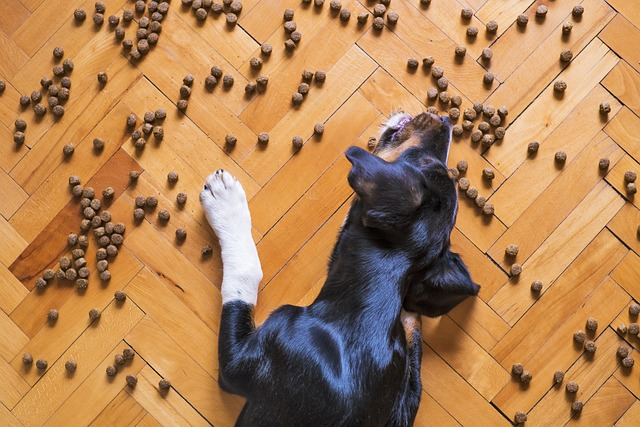
Mealtime is one time that brings pure bliss for your furry friend. It's a pretty common scenario: you place your dog's food bowl on the floor, and within seconds, it's as if they've been deprived of food for days as they inhale their meal. Let us assure you that you're not the only one dealing with this haphazard eating issue.
While this can be a bit worrisome, fixing it is possible and pretty easy and fun for your pup!
In this article, we'll explore the reasons behind your dog eating fast and explore simple ways to address the issue.
So, hang in there; we've got you!
Why Does My Dog Eat So Fast?
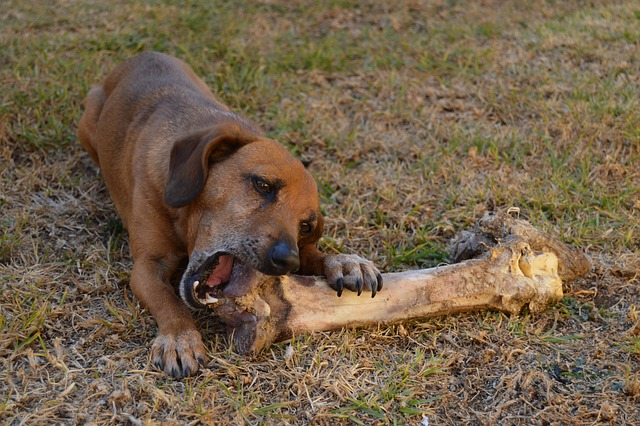
Understanding the reasons behind dogs eating fast can point you in the right direction for finding solutions. There are a bunch of reasons why your furry friend might be a speedy eater, and here are a few of them:
-
Insufficient nutrition
Dogs eat fast because of insufficient nutrition. Dogs with low nutritional diets might constantly feel hungry, even if it seems like they're getting enough to eat.
This is common in pet owners who rely solely on dry dog food or prepare homemade meals for their dogs. You should educate yourself about the nutritional content of your dog's diet or consider switching to a well-balanced, complete raw meat diet.
-
Competition
If you've had multiple dogs in your household or your pet grew up with other critters who had a habit of snatching their food, your dog might have learned to eat fast to ensure they got their share.
This happens because the quick eaters often get more food in a group of animals than other dogs, so your dog picked up the habit of staying well fed.
-
Inconsistent meal times in the past
Suppose your dog didn't always have a fixed eating routine and sometimes didn't have enough to eat. In that case, they might have developed a habit of snatching up food whenever it's around.
-
Pleasure
Have you ever found yourself munching on more than you are supposed to just because you are having a good time? In that case, you can relate to the idea of eating just because it's enjoyable.
Whether your furry friend dines with the family or by themselves, mealtime can be the most exciting part of their day. Thus, the over-excitement gets the best of them.
Why Eating Too Fast Can Be A Problem
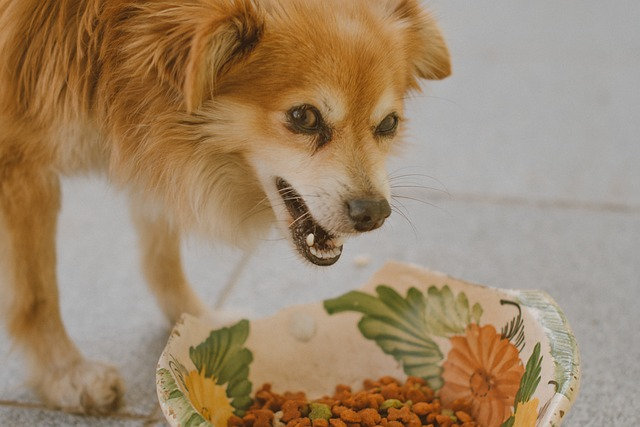
When your furry friend devours their meal at lightning speed, it's a clear sign that they aren't taking the time to properly chew their food. This behavior isn't just a quirky habit; it can pose multiple risks to your dog's health, some of which can be life-threatening.
-
Choking
Rapid eating increases the risk of your dog choking on their food. The lack of chewing means larger chunks of food can get lodged in their throat, leading to a choking emergency.
-
Vomiting
Speedy eaters are more likely to gulp down air along with their food. This can lead to vomiting shortly after a meal.
-
Bloat
This condition occurs when a dog's stomach fills with food, air, or liquid and expands, placing pressure on other organs. Large, deep-chested breeds are particularly at risk for bloat.
-
Gastric Dilatation-Volvulus (GDV)
GDV is a life-threatening condition in which a dog swallows excessive air, causing the stomach to enlarge and twist on itself. Bigger dogs with deep chests are more prone to GDV, requiring immediate veterinary attention.
It's essential to be aware of these dangers, especially if you have a dog like Great Danes or Doberman Pinschers, which are more susceptible to specific issues like bloating and GDV.
If you think your dog might have bloating or GDV, it's super important to call your vet right away. But you can also try to make your dog eat slowly to stop his problem from happening.
How To Get a Dog To Eat Slower?
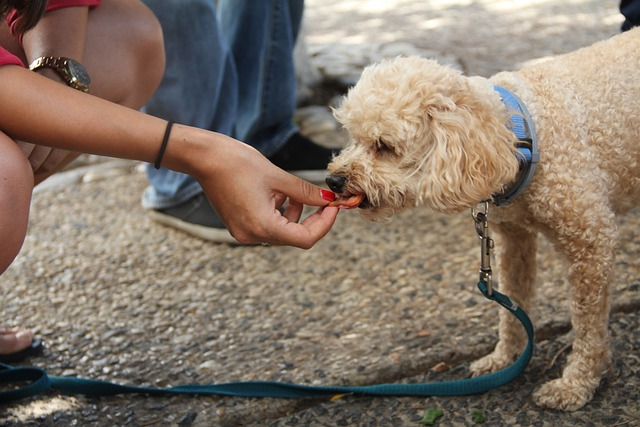
Check out these simple tips that can really help your dog eat slower, making them stay healthy.
-
Food puzzles
Food puzzles are like fun games for your dog during mealtime. They hide or block small pieces of dry food, so your dog has to work to get them out.
These games slow down your fast eater because they have to pick up each little piece of food from around obstacles, so they can't chow down on a lot at once. Plus, these puzzles give your pup mental exercise and make mealtime more enjoyable.
-
Automatic feeder
According to veterinarians, one effective way to slow down your dog's eating is to give them several small meals throughout the day.
However, you can use an automatic feeder if you have a job and can't manage this. Find one that you can set to give your dog a little bit of food every few hours.
-
Use a muffin pan
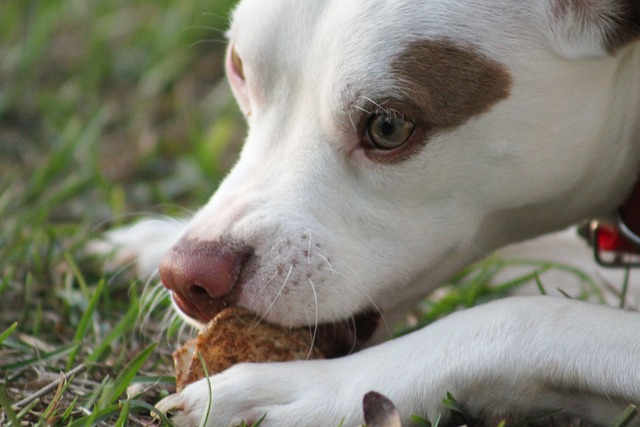
You can use a muffin pan to divide your dog's food into portions. The various compartments filled with food will make your dog eat more slowly as they move from one section to the next.
-
Feed your dogs separately
If you have more than one dog, avoid their mealtime turning into a race to see who can eat the most. Consider giving them their meals separately in different rooms.
This way, they won't feel like they have to gobble their food quickly to prevent others from getting it.
-
Use a snuffle mat
Imagine a snuffle mat as a kind of dining mat for your dog. But instead of a regular mat, this one is designed with big fabric strips that conceal your dog's food. It encourages them to use their sense of smell and search for their meal.
-
Feeding schedule
No matter how often you give your dog food during the day, try to feed them at about the same times every day.
Doing this can help your dog eat more slowly, according to Jennifer Quammen, DVM, who is the chief veterinary officer for TeleVet in Walton, Kentucky. Maybe it's because it makes mealtime less of a surprising and unexpected event for them.
-
Water down their food
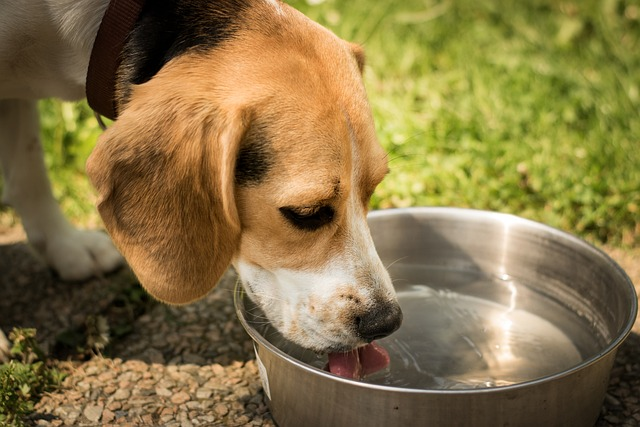
If you feed your dog wet food, think about mixing in some water. This way, your dog will need to drink the water to reach the food, which can make them eat more slowly.
-
Get a feeder bowl
Unlike regular food bowls, these have ridges on the bottom that make the food pieces slide between them. This helps your dog eat slower because they can only grab a piece or two at a time.
-
Place obstacles
Place big items into their food bowl, like a tennis ball or some of your dog's toys. This way, they'll have to eat around these objects, slowing them down.
Just be sure the items you are placing are large enough so that they aren't a choking hazard.
-
Transform mealtime into a training session
Since you know your dog loves food, why not put that to use?
Turn feeding into a fun activity by having your dog perform obedience tricks to earn a few pieces of kibble from your hand. This ensures they eat at a safer pace and helps with training them.
Final Words!
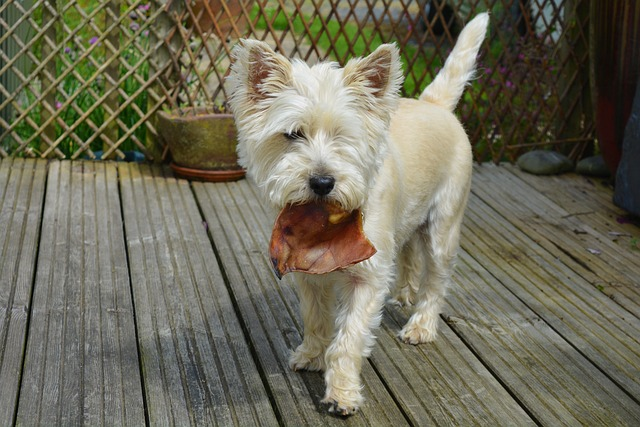
Today at Rexipet's, while exploring how to help your food-motivated dog eat slower, we've covered ten practical ways to make mealtime safer and more enjoyable for your furry friend.
So, whether you try out a snuffle mat, a slow feeder bowl, or something else, the main thing is to find what suits your dog best. The idea is to make mealtime a safe and fun experience, ensuring your dog eats, enjoys every bite, and stays healthy.
Speedy eating can lead to health issues like choking or bloating, which is dangerous. Making these small changes shows them how much we care about their well-being and happiness, one meal at a time.



















